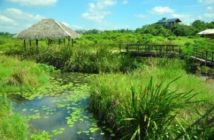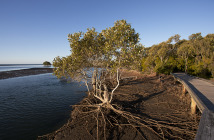The Yatsu Higata Tidal Flat is one of the few remaining mudflats in Tokyo Bay, Japan, with an area of just 40 hectares. More than 90% of the surrounding wetland area was reclaimed for industrial and residential purposes in the 1970s and the small area remaining is almost completely surrounded by dense urbanisation. Once an open shoreline, Yatsu Higata now sits approximately one kilometre inland, with tidal inflow and outflow from Tokyo Bay via two concrete channels.
The wetland owes its conservation to a long history of community involvement. Local residents became involved in the conservation of Yatsu Higata spontaneously rather than at the instigation of managing authorities when they began to notice large?scale and rapid loss of the Yatsu Higata ecosystem. For more than 25 years local communities and groups have promoted conservation and actively opposed the reclamation of the remaining wetland. Additionally, the conservation of and designation of Yatsu Higata as a Ramsar site in 1993 was largely influenced by the actions of local conservation and community groups’, such as petitions, public meetings and organised visits to the site.
Today the wetland provides critical habitat for resident and non-resident species, particularly birds migrating from the North (Siberia) to the South (Australia and Southeast Asia) via the East Asia- Australasian Flyway. However, the wetland continues to be threatened by surrounding industrial and urban activities, and subsequent changes in the ecosystem. Current concerns include management of waste deposits, changes in water quality and changes in sediment type. Though reclamation is not currently a concern for Yatsu Higata, reclamation of remaining tidal flats in other parts of Tokyo Bay continues which is likely to affect the many waterbirds that move between Yatsu Higata and the other sites for feeding and roosting.
The Yatsu Higata Nature Observation Center (YNOC), located to the south of the wetland, is equipped with facilities for bird watching, study and environmental education. The YNOC provides a base from which the local community can unite with government and non?government organisations in order to protect and conserve the Yatsu Higata. The YNOC acknowledges the connectedness of the local community and the wetland and encourages the local community to have a relationship with the wetland, by learning about and helping to preserve the area.



